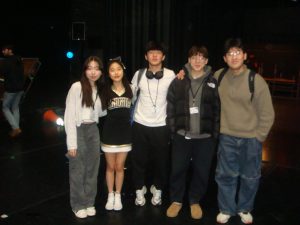Fast Fashion: A Global Epidemic
December 8, 2019

Hidden beneath layers upon layers of beauty and acclaim lies the dark side of the fashion industry; a market that victimizes the poor, feeds off the wealthy, and forces creativity inside a narrow box. The radical shift in our modern culture to fast fashion is a recent global trend that many are following blindly.
In the traditional fashion market, new styles are confined to four predetermined seasons that connect fashion companies to designers’ latest fashion lines. This marketing method forces designers to predict the latest fashion trends months before they hit the market. However, fast fashion disregards this conventional system, and instead aims to produce new trends as quickly as possible to keep up with consumers’ demands. As defined by Wall Street Journal, fast fashion consists of “trendy, inexpensive garments mass produced at lightning speed in subcontracted factories and hawked in thousands of chain stores world-wide.” Essentially, the methods of fast fashion values quantity over quality.
Fast fashion has developed not only into a style of marketing fashion, but it has also become a lifestyle. Fast fashion consumers feel the need to “stay in style”, and as modern trends shift so rapidly, consumers’ demands are higher than ever before. This struggle to maintain relevance also impacts the clothing companies themselves, pressuring them to use cheap material and labor to manage these high production rates. A study by the British charity Barnardo’s found that, on average, a piece of clothing is worn seven times before being thrown away. The culture of fast fashion has become an endless cycle of pressure rooted in the universal fear of being left out.
To combat this, many clothing companies such as Forever 21, H&M, and Gap outsource their labor to sweatshops in poor, underdeveloped countries to keep production costs low and the quantity of products high. These workers are often faced with inhumane working conditions, low wages, and long strenuous hours that companies very rarely acknowledge publicly.
Some workers have even sewed messages containing cries for help into the clothing they manufactured, as a last resort to reach through the mask the fashion industry has so meticulously created.
Fast Fashion is also a major contributor to global pollution. On average, the United States is responsible for producing 11 million tons of clothing waste every single year. This is just a small part of the fashion industry’s large carbon footprint. The materials used to create “trendy” clothes often have toxic chemicals, dangerous dyes, and synthetic materials, that may be cheap, but are also extremely harmful to the environment.
While this may be a global epidemic, most individuals are either unaware of the issue at large or feel disconnected from it. In concerns of the Bergen County Academies, the question remains: are we actually contributors to fast fashion? A survey of BCA freshmen conducted by the Academy Chronicle reveals that three quarters of students either shop at malls or online. These platforms for marketing fashion generally support many top fashion brands. These are the very same brands which make up the fast fashion industry.
The student culture of BCA does not vary greatly from other high schools, as many of those students are also subject to the regular influence of social media, whether it be following the latest trends on Tik Tok —a platform which allows users to make and share short music or comedy videos— or expressing themselves through memes and dances. Along with that, the vast majority of these students are completely unaware of the term “fast fashion,” and even fewer are aware of its negative impacts.
As one AVPA freshman puts it, “I don’t feel like I’m really contributing that much to fast fashion, but if I am, I feel bad.” It is not that students are not morally sound when it comes to dealing with the issue, it is simply that they are uneducated of the negative impacts of the trends they choose to follow.
In a culture so heavily dependent on fashion for self-expression, the fast fashion market continues to boom. Fast fashion has redefined the way we view clothes and the fashion industry as a whole. Now every piece of clothing comes with a greater meaning, has a story of where it has been and where it will eventually end up. Wearing fast fashion is reflective of your morals and defines what you choose to advocate. Fashion holds more value then the beauty it presents itself as. It has become a platform for change and a voice for those who cannot speak for themselves.
Photo Source:
http://www.fastfashion-dieausstellung.de/en/





